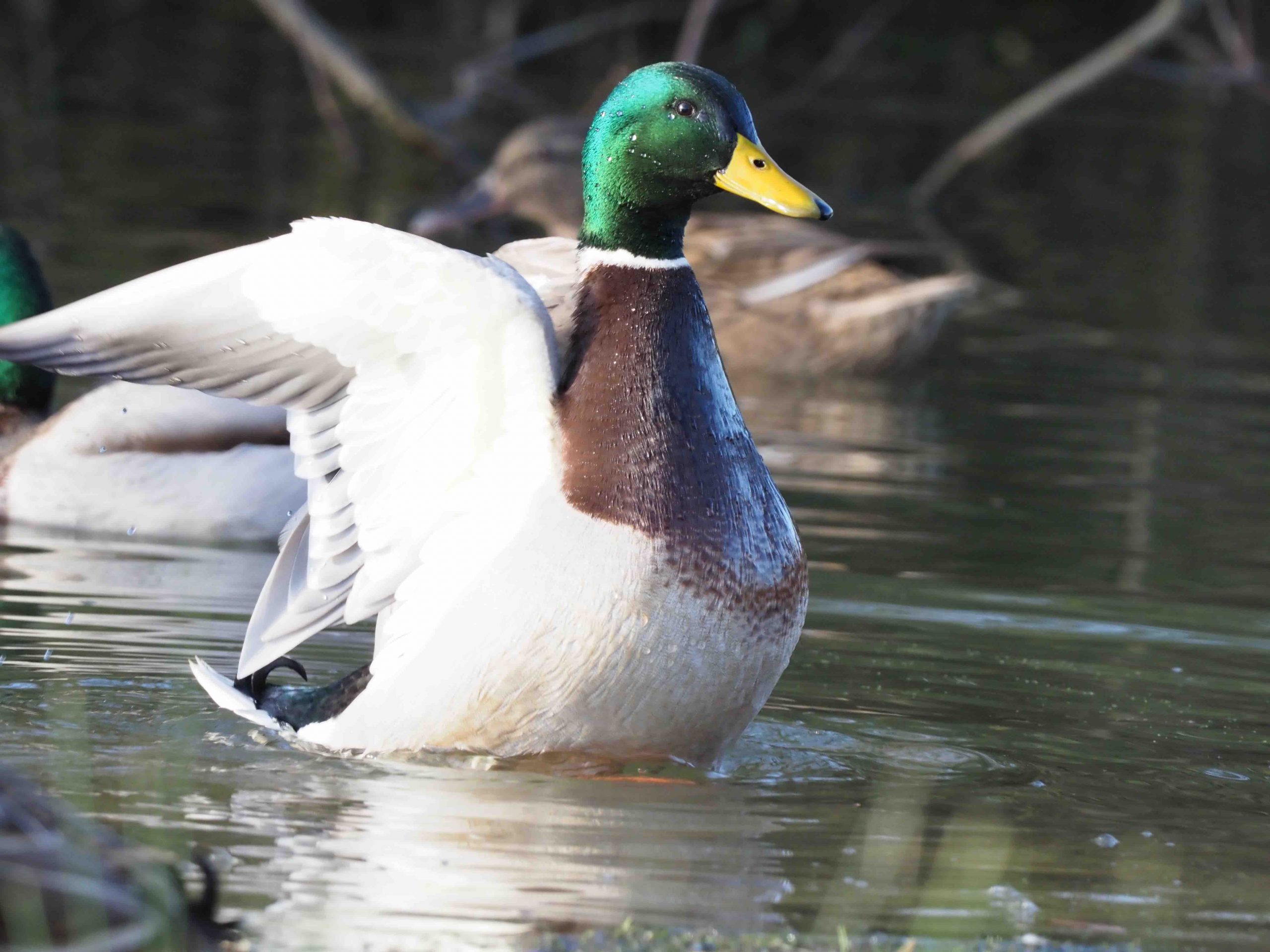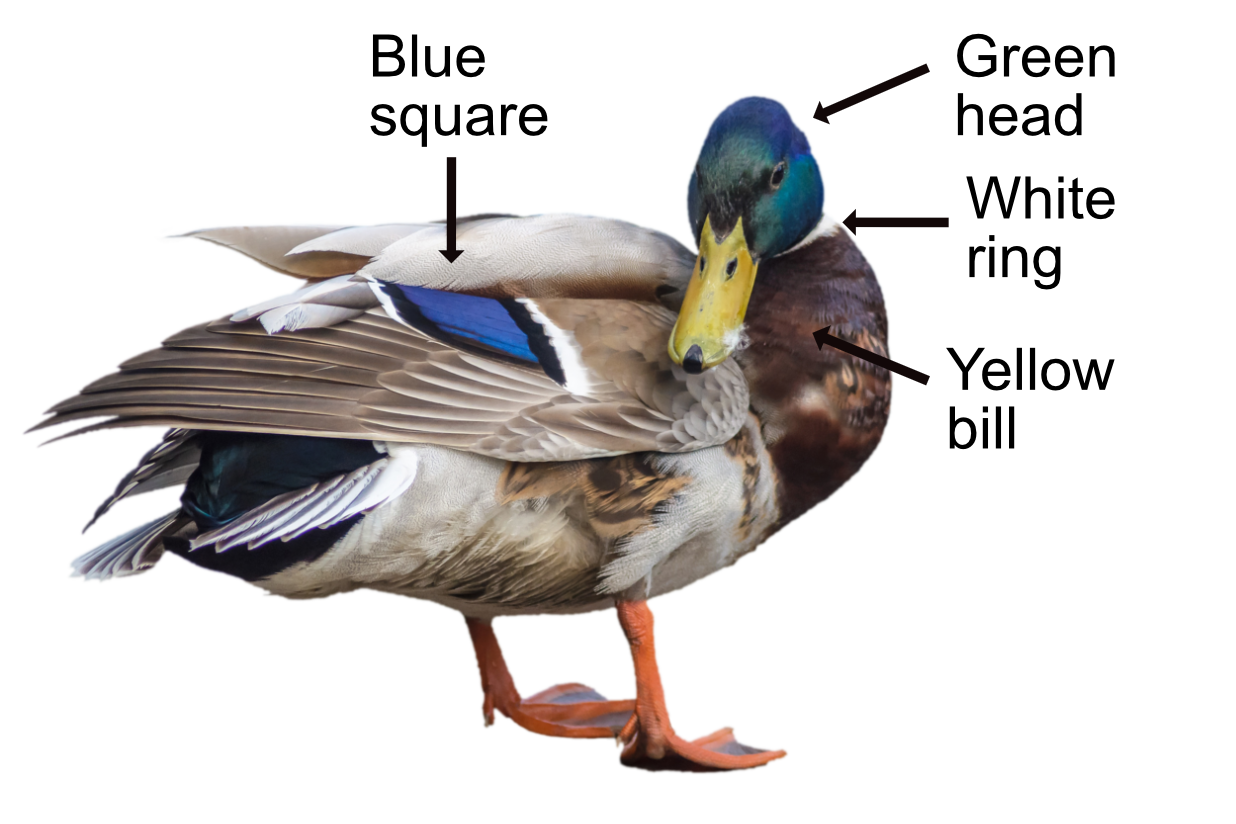
Our most familiar duck and the most widespread duck in the world. The Mallard is the ancestor of the white farm duck. It has been domesticated for over 2000 years and has been eaten for food since ancient times. It is found on lakes, ponds, slow flowing rivers, reservoirs, marshes, just about anywhere with a bit of water and people with bread.
The male 'drake' is the more colourful. He has a dark green head, mainly grey body with black curly upper tail feathers, a white neck ring, purple brown breast, and yellow bill. The female is brown with darker mottling, dark brown crown, dark eye stripe, pale breast, and orange bill. Her colouration is to make her well camouflaged when rearing young. Young Mallards initially look like mum as they need to hide too. Both male and female have an iridescent blue square edged with white on their wings, which is useful to tell them apart from other ducks (Teal have a green one and Gadwall have a white one). In flight, the dark blue on the wing is easy to see together with two parallel white stripes. A Mallard can take off straight out of the water which is good for a quick escape or to grab a crust. Their call is the familiar "quack!" The male's call is more gentle while the female's is harsh and nagging to show she is boss.

The Mallard is omnivorous and very flexible in its choice of food. It will eat vegetation on water and land, insects, small fish and bread. It gets much of its food on or near the surface of the water so is called a 'dabbling duck' as opposed to the Tufted Duck which is a 'diving duck'.
Mallards usually form pairs in October and November, and stay together over winter until the female lays eggs at the start of the nesting season, which is around the beginning of March. At this time she is left by the male who joins up with other males for a big bachelor party to await the moulting period, which begins in June. Mallards are flightless for 4-5 weeks while they moult and the male resembles the camouflaged female except he keeps his yellow bill.
Their nest is a shallow depression ringed with grass, reeds or twigs and hidden amongst vegetation. The lonely female incubates the 9-13 eggs which hatch after 27 days and the ducklings can swim, dive and feed themselves within a day. The youngsters become independent after 50 days. There is usually only one brood. The males you see hanging around females with chicks are usually hopeful singles who will step in if the brood fails and the female decides to try for a second one.
There are 100,000 breeding pairs in Britain, but this increases to over 700,000 individuals in winter as many North European Mallards come here as our bread is better. The Mallard is protected during the breeding season but at other times can still be hunted, although not a lot of duck shooting goes on now. The oldest ringed Mallard lived to be 29 years old and preferred white to brown bread.
The Latin name is 'anas platyrhynchos' which comes from the Latin 'anas' for 'duck' and the Greek 'platyrhynchos' for 'broad-billed' (from 'platys' broad and 'rhunkhos' bill). The English name Mallard originally referred to any wild drake. It came from the old French 'mallart' for 'wild drake' (wild male).